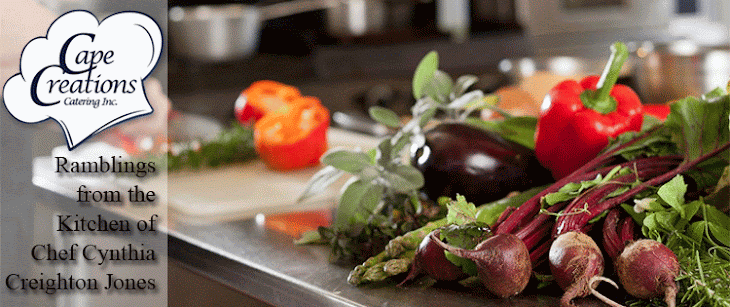 |
| Young Chardonnay grapes await ripening at Iron Horse Vineyards. |
For that important toast or prior to a reception,
Champagne or sparkling wine is a tradition enjoyed by everyone.
But not all that a sparkle – or bubbles – is necessarily Champagne.
For a bubbly wine to be called “Champagne,” it must hail form the Champagne
region of France and meet that country’s requirements for labeling. Al other
bubbles from around the world carry their own designation.
In America, bubbly wines are called “sparkling wines.” Italy
has its own highly effervescent wines in “Prosecco,” and from Spain comes delicious
and fizzy “Cava.”
And if you venture away from the Motherland of bubbles –
France – you’re likely to find great tasting sparklers and much better values.
Our friend Tim Rutherford of Savannafoodie.com, has
written about wine for more than decade and has a great bottom line thought on
bubbles:
“I would much rather have an amazing bottle of Prosecco
or Cava – or a superb American sparkling wine – than a bargain basement French
Champagne.”
With that in mind, let’s take a look at each style – but first,
let’s go in armed with some basic knowledge.
On Champagne in particular and other bubblies generally,
there will be some indication on the label as to level of sweetness. You’re
like to see these phrases – and here’s what it means:
Brut less than 15 gram of sugar per liter (dry, this is
the typical style of Champagne with no sweetness) Extra-Dry 12-20 gram of sugar per liter (still dry with a hint of sweetness
or slightly sweet)
Sec 17-35 gram of sugar per liter (medium sweet)
Demi-Sec 33-55 gram of sugar per liter (sweet)
Sec 17-35 gram of sugar per liter (medium sweet)
Demi-Sec 33-55 gram of sugar per liter (sweet)
The level you choose is up to you and your specific
tastes. Brut is the most common Champagne chosen for a toast – but it is necessarily
required that a toast Champagne be dry. Remember, it’s your special day – drink
what you enjoy.
Sparkling wines are typically made from one of three
grape varieties – or a blend of these varieties. Each grape has its role:
Pinot Noir adds body, structure, aroma,
and a complexity of flavors.
Pinot Meunier contributes fruitiness,
floral aromas, and character.
Chardonnay gives freshness, delicacy, elegance, and
finesse. For this reason, many producers make a blanc de blancs (Chardonnay)
Champagne.
American Sparkling Wines
Most grape growing regions of the US have winemakers who
produce a sparkling wine. For those that are closest to French style look for
producers who utilize “method champenoise.” This means the process used for fermenting,
aging and bottling follows traditional French practices.
Some of our favorites include:
Iron Horse: Based in Sonoma County, California, Iron
Horse is known for a long history of producing some of America’s most
celebrated sparkling wines – including the sparkling wine that was used to toast
the historic Reagan-Gorbachev Summit Meetings ending the Cold War. However, its
“Wedding Cuvee” marks those special days – and anniversaries – more than any of
its labels. This is Iron Horse's Blanc de Noirs, made from predominantly Pinot
Noir.
Gruet: The Gruet family has made Champagne in France for
decades – but with this property near Truth or Consequence, New Mexico,
produces still wines and sparkling wines from the highest elevation vineyard in
North America. A large variety of vintage and non-vintage sparklers are
produced, including some made with other grapes. Our favorite is Gruet NV Demi
Sec – subtle fruity aromas and the freshness of the Demi-Sec drives the
character of this light bodied, semi-dry sparkling wine. The palate carries
through with a creamy sensation and vivid flavor of green apples, ripe pears,
pineapple and a hint of mineral.
 |
| Hand-racking is part of 'methode champenoise' practiced at Wolf Mountain Vineyard. |
Prosecco
Italian sparkling wines are the domain of a handful of producers
from the country’s famed Veneto region. Prosecco is a white wine that is generally
dry or extra dry wine. It is normally made from the Glera grape – although some
producers refer to the grape as “Prosecco.”
Labels to look for include:
 |
| Bisol Vineyard land in Italy's Veneto. |
Carpene: Carpenè Malvolti Prosecco di
Conegliano Extra Dry won a Gold Medal at the International Wine
& Spirit Competition 2012. This wine is the epitome of how
fine Prosecco Spumante should be: Fresh, dry, lively and deliciously
grape-scented.
Cava
Spain is recognized for the great wine values it is
currently producing – and its Cava is no exception.
Most Cava is produced in Catalonia – it may be white (blanco)
or rosé (rosado).
Only wines produced method champenoise may be labelled cava, those produced by
other processes may only be called "sparkling wines" (vinos espumosos).
Labels we’ve sampled include:
Vega Barcelona: This producer’s Cava Brut Reserve is made
from three Spanish grape varieties; this stunning sparkler serves up aromas and
flavors of red delicious apple, pear, citrus and crème brulee.
Vinos Libre: Ya Cuvee 23 Reserva Cava is a fresh, clean
Cava with a great nose, solid minerality, elegant mouth feel and a soft fresh
lemon finish with very persistent bubbles.
Cheers!
Regardless of your choice – Champagne, American Sparkling
Wine, Prosecco or Cava – all should be served well-chilled in flutes to show
off the beautiful bubbles that dance to the surface.





